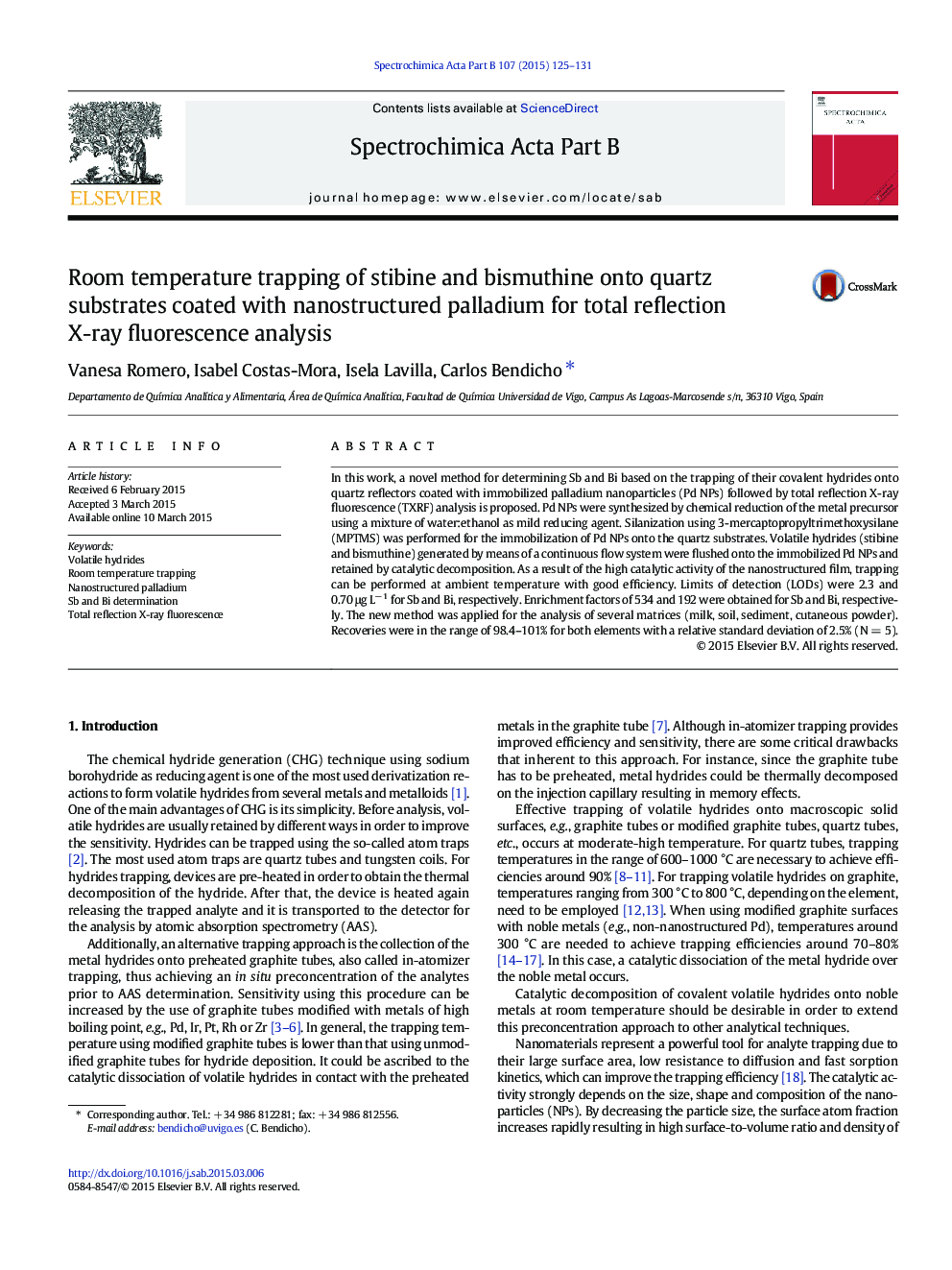| Article ID | Journal | Published Year | Pages | File Type |
|---|---|---|---|---|
| 1239628 | Spectrochimica Acta Part B: Atomic Spectroscopy | 2015 | 7 Pages |
•A novel method for trapping covalent hydrides of antimony and bismuth is proposed.•Emphasis is placed on the application of Pd nanoparticles as trapping surface.•The nanostructured surface provides high catalytic activity at ambient temperature.•Analysis by total reflection X-ray fluorescence is performed.•Determination of Bi and Sb in different matrices is carried out.
In this work, a novel method for determining Sb and Bi based on the trapping of their covalent hydrides onto quartz reflectors coated with immobilized palladium nanoparticles (Pd NPs) followed by total reflection X-ray fluorescence (TXRF) analysis is proposed. Pd NPs were synthesized by chemical reduction of the metal precursor using a mixture of water:ethanol as mild reducing agent. Silanization using 3-mercaptopropyltrimethoxysilane (MPTMS) was performed for the immobilization of Pd NPs onto the quartz substrates. Volatile hydrides (stibine and bismuthine) generated by means of a continuous flow system were flushed onto the immobilized Pd NPs and retained by catalytic decomposition. As a result of the high catalytic activity of the nanostructured film, trapping can be performed at ambient temperature with good efficiency. Limits of detection (LODs) were 2.3 and 0.70 μg L− 1 for Sb and Bi, respectively. Enrichment factors of 534 and 192 were obtained for Sb and Bi, respectively. The new method was applied for the analysis of several matrices (milk, soil, sediment, cutaneous powder). Recoveries were in the range of 98.4–101% for both elements with a relative standard deviation of 2.5% (N = 5).
